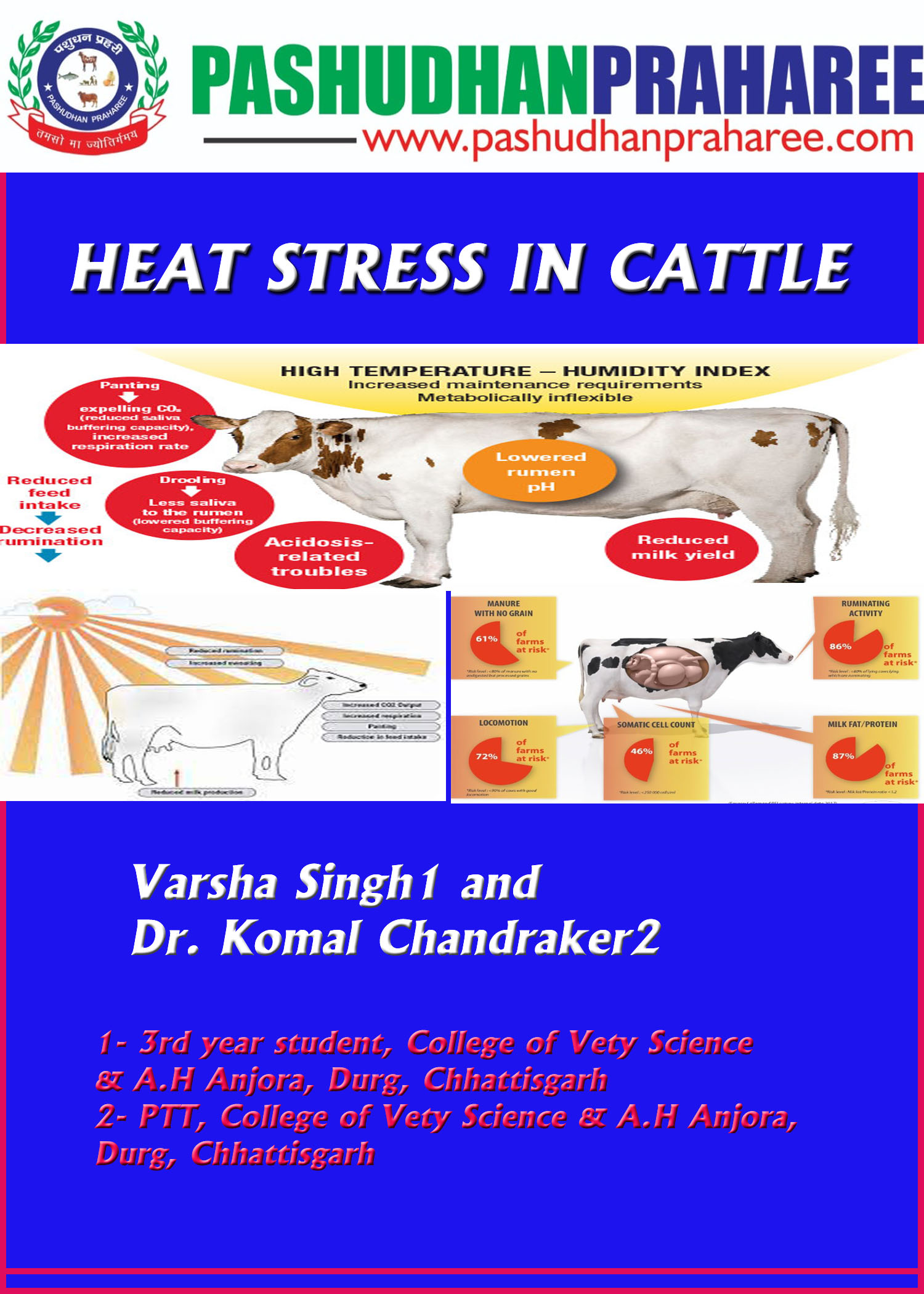HEAT STRESS IN CATTLE
Heat stress occurs when the heat load in the body of cattle is increased and cow is not able to lose this heat by respiration sweating and air blowing .It is generally common in summer season.
Increased heat load in cattle is due to-
- Heat accumulated by direct solar radiation.
- Heat generation from digestion of forage.
Heat stress mainly affects economy of farm. Heat stress leads to reduced feed intake, increased disease incidence, increased death rates. In lactating cows heats stress lead to reduced milk production, reduced pregnancy rates and reduction in the fat content of milk. Heat stress in late gestating cows have shorter gestation period and calves with lower birth weight.
Cow begins to experience, mild heat stress around 72 degree Celsius with 50% humidity. High producing cows eat more and generate more heat. They can begin to experience stress at air temperature as low as 65 degree Celsius.
Heat stress level and effects on the body:–
| S. No. | Heat stress level | Respiration(breathe per minute) | Body Temperature( ) |
| 1 | No heat stress | 40-60 | 101.5-102.5 |
| 2 | Mild | 60-75 | 102.5-103 |
| 3 | Mild to moderate | 75-85 | 103-104 |
| 4 | Moderate to severe | 85-100 | 104-105 |
| 5 | Severe | 100-104 | Over 105 |
Signs of heat stress
- Seeking shade
- Stand in water
- Change orientation to sun
- Crowd together to shade each other
- Reduced time in lying down
- Reduced time in rumination
- Reduced feed intake
- Increased water intake
- Increased respiratory rate
- Open mouth panting with neck extended
- Lethargic
- Lack of coordination
- Agitation and restlessness
Effect of heat stress on fertility
- Decreased reproductive performance
- Decreased immune function
- Decreased milk production
- Decreased growth and metabolism
- Increased incidence of disease
Prevention of heat stress
- Shade – It is the most effective way to reduce the solar heat .It helps lactating and dry cows to manage their heat stress in warm weather. You have to make sure to avoid overcrowding in shade , if overcrowding increases it will cause more heat generation due to conduction .Apply wet gunny bags in windows of shade. Use paddocks with shade trees during period of heat stress
- Evaporative cooling by sprinkler and fans – sprinkling water wet the cows body and her increased body heat is used to evaporate the water on the skin.Avoid excessive sprinkling that can lead to water to run down and wet the udder and this will cause an increased risk of mastitis .The effectiveness of sprinkling depends on the removal of water vapour by air movement ideally by using fans.
- Grazing – should be allowed in early morning and late evening.
- Drinking water – Adequate water should be supplied to animals. Hydration is very important to regulate body temperature, cows will typically drink 2-6 times water/day .We must ensure that water level in the trough are high enough that the trough never runs dry .Water trough should be deep enough so that the cows can submerge their muzzle while drinking.
- Nutritional balance—Appropriate nutritional arrangement during heat stress might improve the body’s condition and reduced body temperature. Provide low bulk feed in the diet which increases energy and nutrient density ,so we can
- Increase the fiber digestibility
Add fat (fat has high energy content and low heat increment).
Add some feed additives and minerals in their diet like – Vitamin-E , niacin saturated fatty acid , glutamine and yeast culture.
Varsha Singh1 and Dr. Komal Chandraker2
- 3rd year student, College of Vety Science & A.H Anjora, Durg, Chhattisgarh
- PTT, College of Vety Science & A.H Anjora, Durg, Chhattisgarh



